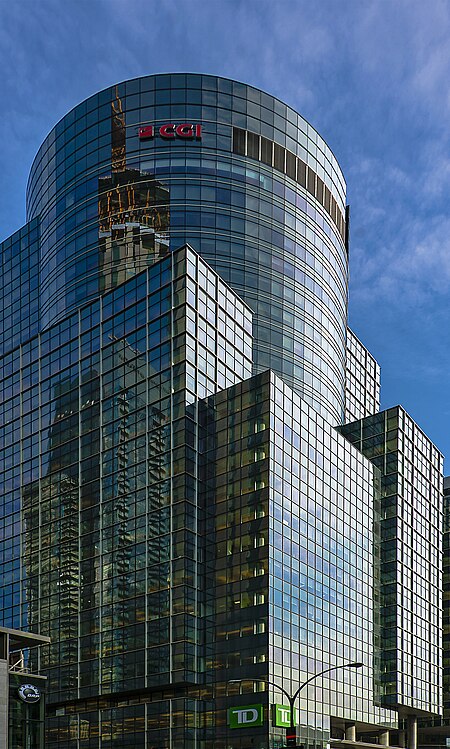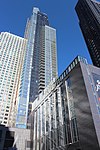E-Commerce Place
Downtown MontrealEmporis template using building IDOffice buildings completed in 2003Office buildings completed in 2004Quebec building and structure stubs ... and 2 more
Skyscraper office buildings in CanadaSkyscrapers in Montreal

E-Commerce Place (French: Cité du commerce électronique) (CCE) is an office complex of two towers located in Montreal, Quebec, Canada. It is located on René-Lévesque Boulevard West between Mountain Street and Lucien L'Allier Street in Downtown Montreal. It derives its name from the fact that its construction was part of a program grant from the Government of Quebec to promote the development of employment in the field of information technology. The complex provided incentives to firms specializing in electronic commerce.
Excerpt from the Wikipedia article E-Commerce Place (License: CC BY-SA 3.0, Authors, Images).E-Commerce Place
Rue Lucien-L'Allier, Montreal Ville-Marie
Geographical coordinates (GPS) Address Nearby Places Show on map
Geographical coordinates (GPS)
| Latitude | Longitude |
|---|---|
| N 45.4959 ° | E -73.5722 ° |
Address
Cité du Commerce électronique
Rue Lucien-L'Allier
H3G 2H1 Montreal, Ville-Marie
Quebec, Canada
Open on Google Maps








